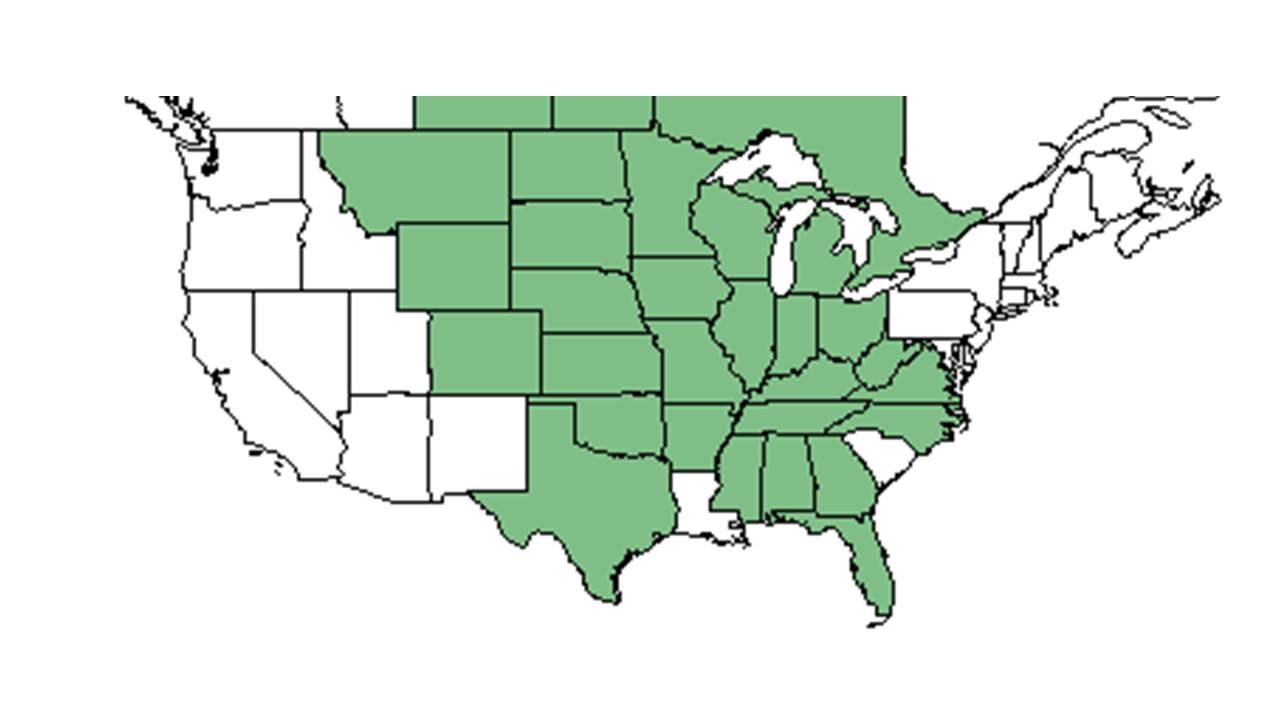Smilax lasioneura
| Smilax lasioneura | |
|---|---|
Error creating thumbnail: Unable to save thumbnail to destination
| |
| Photo by W.H. Wagner (slide collection), permission and posted by University of Michigan Herbarium Michigan Flora Online | |
| Scientific classification | |
| Kingdom: | Plantae |
| Division: | Magnoliophyta – Flowering plants |
| Class: | Liliopsida – Monocotyledons |
| Order: | Liliales |
| Family: | Smilacaceae |
| Genus: | Smilax |
| Species: | S. lasioneura |
| Binomial name | |
| Smilax lasioneura Hook. | |

| |
| Natural range of Smilax lasioneura from USDA NRCS Plants Database. | |
Common names: Blue Ridge carrionflower, Midwestern carrionflower
Contents
Taxonomic notes
Synonyms: Smilax herbacea var. lasioneura (Hooker) A.L.P.P. de Candolle; Nemexia lasioneuron (Hooker) Rydberg; Smilax lasioneuron.[1]
Description
A description of Smilax lasioneura is provided in The Flora of North America.
Distribution
Ecology
Habitat
In the Coastal Plain in Florida, S. lasioneura can occur in mesic woodlands; calcareous woodlands; wooded seepage slopes; ridges between ravines; pine-oak-hickory woods; and mixed pine-hardwood forests.[2] Soils include loam, sandy loam and loamy sand.[2]
Associated species include Arisaema, Toxicodendron, Trillium, Smilax ecirrhata, and bloodroot.[2]
Phenology
This species has been observed to flower from February to July[3], fruiting March through November.[2]
Conservation, cultivation, and restoration
Cultural use
There are many species of Smilax and it is thought they can all be used in similar ways. Historically, the roots were harvested and prepared in a red flour or a thick jelly that could be used in candies and sweet drinks. Our first known written account of using the plant roots to make this jelly is from the journal of Captain John Smith in 1626. Other travelers throughout US history have made note of the uses of Smilax plants. We know the flour was used in breads and soups, and that a drink very similar to Sarsaparilla could be prepared.[4]
Photo Gallery
References and notes
- ↑ Weakley, A.S. 2015. Flora of the southern and mid-atlantic states. Working Draf of 21 May 2015. University of North Carolina at Chapel Hill, Chapel Hill, North Carolina.
- ↑ 2.0 2.1 2.2 2.3 Florida State University Robert K. Godfrey Herbarium database. URL: http://herbarium.bio.fsu.edu. Last accessed: October 2015. Collectors: Loran C. Anderson, Bill Boothe, Marcia Boothe, A.F. Clewell, K. Craddock Burks, Patricia Elliott, Angus Gholson, R.K. Godfrey, Gary R. Knight, Richard S. Mitchell, Lovett E. Williams Jr. States and Counties: Florida: Gadsden, Jackson, Jefferson, Leon, Liberty. Compiled by Tall Timbers Research Station and Land Conservancy.
- ↑ Nelson, G. PanFlora: Plant data for the eastern United States with emphasis on the Southeastern Coastal Plains, Florida, and the Florida Panhandle. www.gilnelson.com/PanFlora/ Accessed: 19 MAY 2021
- ↑ Fernald, et al. 1958. Edible Plants of Eastern North America. Harper and Row Publishers, New York.